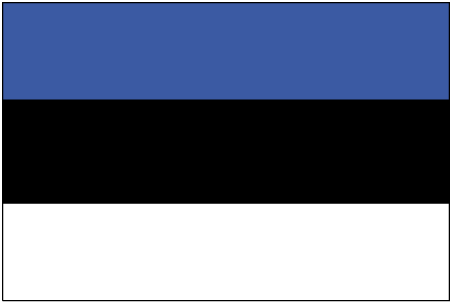Login form
Customs of Estonia
 Marriage and Family
Marriage and Family
Estonians usually marry in their early 20s, after they have finished their education. Couples often live together before or instead of marriage. Weddings are generally secular, but church weddings are becoming more popular. Parents from both families help to organize the celebration and invite friends and relatives. Newlywed couples commonly live with their parents until they are more financially established.
Families tend to be small—most have one to three children. Ties with the extended family are important, and grandparents often care for their grandchildren while both parents work. Parents will generally give as much financial support as they can to their adult children. In return, children expect to take responsibility for looking after their parents in their old age. It is usually only those with no close relations who are cared for in nursing homes.
Eating
Potatoes, cabbage, carrots, and beans are the prevalent vegetables. Apples, cherries, and pears are popular fruits, as are a number of wild berries, including raspberries, strawberries, cranberries, cloudberries, and blueberries. Pork, beef, lamb, veal, chicken, and sausage are all common meats. Fish—such as salmon, cod, herring, sole, pike, perch, or whitefish—is often served smoked or as an appetizer. Dairy products such as milk, butter, yogurt, sour cream, and cottage cheese are dietary staples, and most people drink tea and coffee each day. Pirukad, a pastry with meat and vegetables, is a popular dish. Rosolje, a potato salad made with beets and herring, is another favorite. Sauerkraut soup is served with sour cream. At Christmas, people eat verivorst, blood sausage; jellied meats; sült, headcheese; roast pork or goose; sauerkraut; potatoes; rye bread; and homemade ale.
Breakfast may consist of dark rye bread, eggs, cheese, pastries, sandwiches, or porridge, accompanied by milk or coffee. The main meal is at midday and is made up of three courses: soup, a main dish of meat or fish and potatoes, and dessert. Common soups include bouillon, cabbage, and pea. Cake, ice cream, fruit, and fruit preserves are often served for dessert. Dinner is a lighter meal and is eaten after 6 pm.
Socializing
Estonians usually greet each other with a simple Tere (“Hello”) and a handshake. The younger person initiates the greeting, and men frequently greet women first. In a group, the elderly are greeted first. People often begin a conversation with Kuidas käsi käib? (“How are you?”) or Kuidas läheb? (“How is it going?”). Other greetings include Tere hommikut (“Good morning”) and Tere õhtut (“Good evening”). When departing, Estonians bid farewell with Head päeva (“Good day”) or Head õhtut (“Good evening”).
When approached, it is polite to stand and acknowledge the other person’s presence, maintaining eye contact during the greeting. It is courteous to use the formal pronoun teie (“you”) when meeting someone for the first time, with older people, and with those in authority. The informal sina (“you”) is used with friends and relatives.
Estonians enjoy visiting or entertaining friends and engaging in lively conversation over a meal. Punctuality is expected, and guests staying overnight generally give a gift to thank the hosts for their hospitality.
Recreation
Estonians greatly enjoy the outdoors. Even in cities, people spend many leisure hours gardening, and in summer many Estonians go to the forest to pick wild berries and mushrooms. Estonians are also enthusiastic about sports, and the country has a strong national basketball team. Volleyball, sailing, ice boating, ice skating, swimming, and cycling are all popular.
Holidays and Celebrations
Estonians celebrate the New Year on 1 January. In a country where snow can be counted upon, there is a sledding holiday in February or early March called Vastlapäev. On this day special foods are prepared and people hope for a good long sled ride, as this is said to indicate good luck for the autumn harvest.
Easter is celebrated from Good Friday to Easter Sunday. Easter eggs are delicately painted, and special foods are eaten during this time. At the Pentecost (50 days after Easter), eggs are painted again. On April Fool’s Day (1 April), people delight in playing tricks on each other. Two holidays in June commemorate historical events. On 14 June, Estonians deported to
Jaanipäev (Midsummer’s Day) is celebrated on 24 June. Rich with significance and ritual, this celebration marks the beginning of what are known as the “white nights,” when the sun sets for only a few hours each night. Huge bonfires light up the brief darkness, as do fires wafting around water on small rafts. Parties, dances, and concerts add to the festive spirit. According to tradition, celebrants are supposed to search for fern blossoms—which do not actually exist—on this night, for they are said to bring the finder happiness. Unmarried girls are to pick seven kinds of flowers and crush them under their pillows, in hopes of dreaming about their future husbands.
The Day of the Souls (2 November) is a day to remember the dead. Kadripäev (25 October) and Mardipäev (10 November) are special days for boys and girls, respectively. Traditionally, they paint their faces, dress up in old clothes, and go around to neighbors’ houses singing national songs and knocking on doors, asking to be let in out of the cold. Once inside, they are supposed to be offered fruit and candy. Christmas, celebrated over a three-day period (24–26 December), reaches a
Source: Encarta Interactive World Atlas

